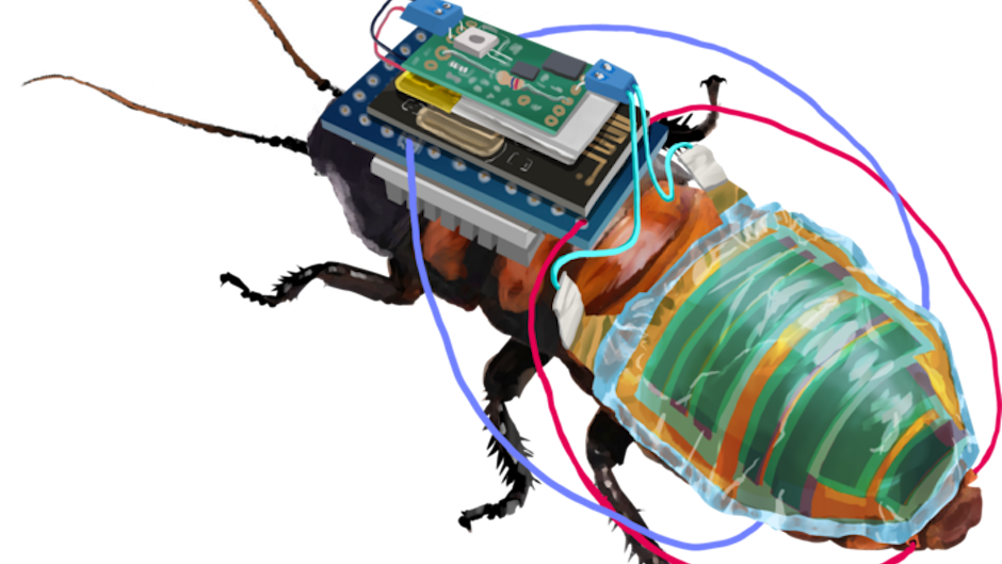RIKEN team develops cyborg cockroach
Researchers in Japan claim to have engineered a system for creating rechargeable, remote controlled cyborg cockroaches.

The system, developed by a team at the RIKEN Cluster for Pioneering Research, involves a tiny wireless control module powered by a rechargeable battery attached to a solar cell. According to researchers, ultrathin electronics and flexible materials allow the insects to move freely, aiming to make the use of cyborg insects — part insects, part machine — a practical reality.
The RIKEN team said researchers have been trying to design cyborg insects to help inspect hazardous areas or monitor the environment, but for their use to be practical, handlers must be able to control them remotely for long periods of time. This requires wireless control of their leg segments, powered by a rechargeable battery.
Keeping the battery adequately charged is fundamental, the team said, and whilst it’s possible to build docking stations for recharging the battery, the need to return and recharge could disrupt time-sensitive missions.
Researchers believed the best solution was to include an on-board solar cell that can continuously ensure the battery stays charged. To successfully integrate these devices into a cockroach that has limited surface area required the team to develop a special backpack, ultrathin organic solar cell modules and an adhesion system that keeps the machinery attached for long periods of time while also allowing natural movements.
Register now to continue reading
Thanks for visiting The Engineer. You’ve now reached your monthly limit of news stories. Register for free to unlock unlimited access to all of our news coverage, as well as premium content including opinion, in-depth features and special reports.
Benefits of registering
-
In-depth insights and coverage of key emerging trends
-
Unrestricted access to special reports throughout the year
-
Daily technology news delivered straight to your inbox










National Gas receives funding to develop Gravitricity underground hydrogen storage system
One single rock salt mine - Winsford - has 23 <i>MILLION </i>cubic metres of void and even allowing for 10% of that void set aside for hazardous waste...